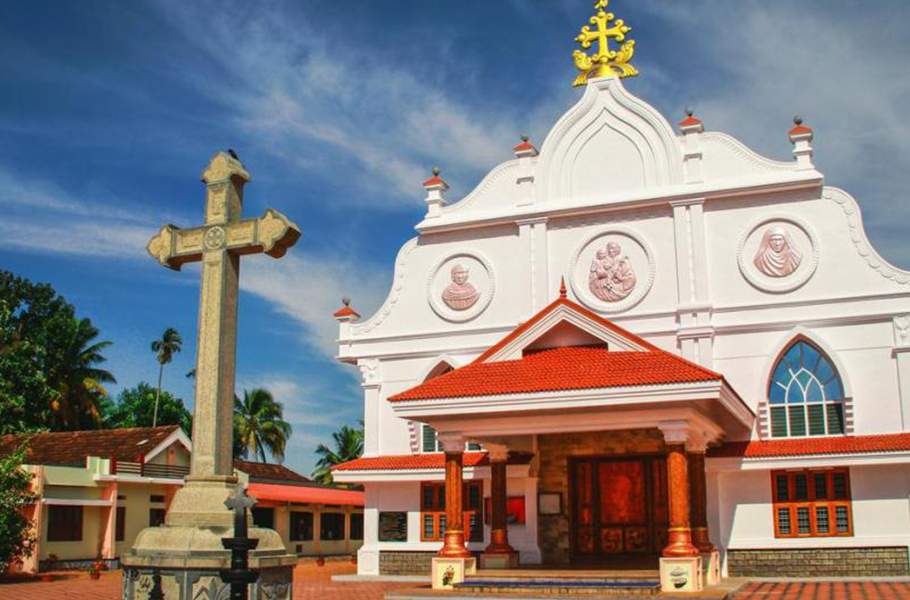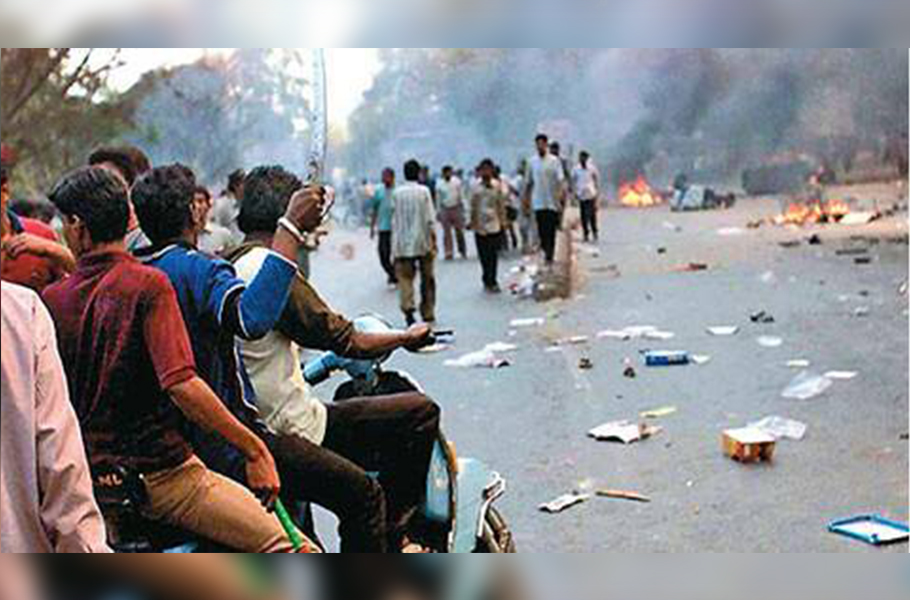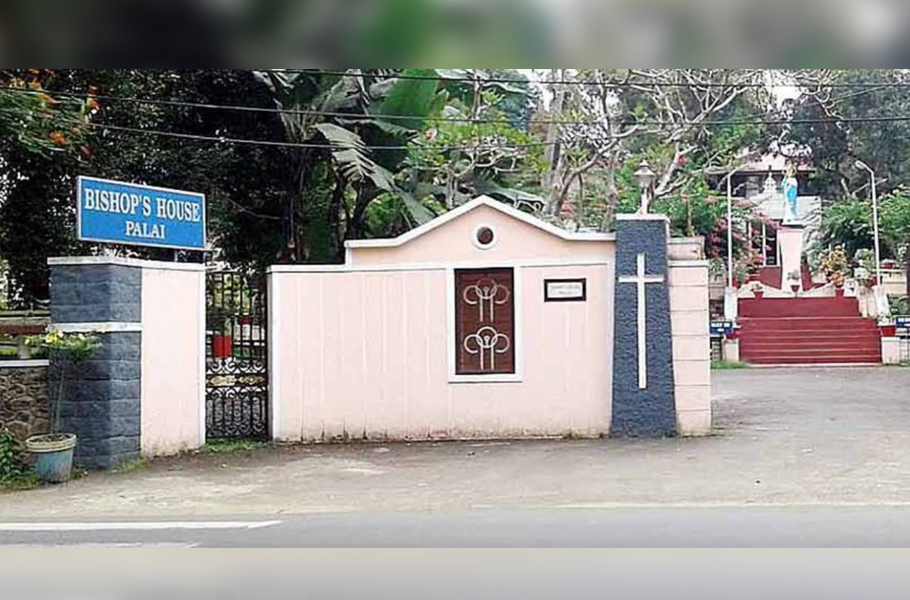
- Home
- News
- Analysis
- States
- Perspective
- Videos
- Education
- Entertainment
- Elections
- World Cup 2023
- Features
- Health
- Business
- Series
- Economy Series
- Earth Day
- Kashmir’s Frozen Turbulence
- India@75
- The legend of Ramjanmabhoomi
- Liberalisation@30
- How to tame a dragon
- Celebrating biodiversity
- Farm Matters
- 50 days of solitude
- Bringing Migrants Home
- Budget 2020
- Jharkhand Votes
- The Federal Investigates
- The Federal Impact
- Vanishing Sand
- Gandhi @ 150
- Andhra Today
- Field report
- Operation Gulmarg
- Pandemic @1 Mn in India
- The Federal Year-End
- The Zero Year
- Premium
- Science
- Brand studio
- Home
- NewsNews
- Analysis
- StatesStates
- PerspectivePerspective
- VideosVideos
- Entertainment
- ElectionsElections
- Sports
- Loading...
Sports - Features
- BusinessBusiness
- Premium
- Loading...
Premium

BJP’s Kerala prospects depend on Church’s Muslim stance: Ashutosh Varshney

Mar Joseph Kallarangatt, bishop of the Palai diocese of the Syro-Malabar Church in Kerala, recently stirred a hornet’s nest by claiming the existence of ‘narcotic jihad’ targeting young people belonging to non-Muslim faiths in the state. He laced his claim with an added allegation of ‘love jihad’ saying that young women, belonging to non-Muslim faiths, were being lured and...
Mar Joseph Kallarangatt, bishop of the Palai diocese of the Syro-Malabar Church in Kerala, recently stirred a hornet’s nest by claiming the existence of ‘narcotic jihad’ targeting young people belonging to non-Muslim faiths in the state. He laced his claim with an added allegation of ‘love jihad’ saying that young women, belonging to non-Muslim faiths, were being lured and subjected to exploitation, forced conversion and terrorist activities.
Following the bishop’s statement, the Muslim community organised protests in the state alleging that he has insulted their community. However, as Muslim organisations undertook a protest march to the Pala diocese headquarters, the Catholic laity reciprocated with a march of its own to the diocese headquarters in solidarity with the bishop. The episode has added to the tension in Kerala’s otherwise tranquil atmosphere.
The Federal spoke to Ashutosh Varshney, Sol Goldman Professor of International Studies and the Social Sciences and Professor of Political Science at Brown University, on a range issues, including the possibility of communalism sweeping Kerala, a BJP-Catholic church alliance in the state, BJP’s prospects beyond the 2022 UP assembly elections and the scope for Congress’ resurgence.
Here are the excerpts from the interview:
In your book Ethnic Conflict and Civic Life: Hindus and Muslims in India, you mention Calicut among towns in India that see fewer communal incidents. Isn’t that the case with other cities of Kerala as well?
There are always occasional tensions, even in peaceful towns. The issue is whether the tensions would escalate into violence. Just outside Calicut city — in Beypore where the fishermen resided — there were some riots after I wrote the book. But my argument is that the Hindus, Muslims and the Christians are so integrated in day-to-day life — whether it is in neighbourhoods, schools, businesses — that causing polarisation and triggering riots are extremely hard in Calicut and Kerala in general. Of course, some groups are interested in creating problems in Kerala also. They want now, and wanted then, Hindu-Muslim polarisation. But the texture of the society is such that it is very hard to disrupt the integrated civic life of Kerala.
For example, when I was doing research in Calicut, there would be business associations in which the president would be a Hindu, vice-president a Christian and the secretary a Muslim. Once a city’s life gets so organically connected, deep fissures that are needed for communal violence are hard to create. The last time in Kerala’s history when such deep fissures were created was when the Mappila rebellion took place. Since then there hasn’t been any great shock to this integrated inter-communal life. Kerala was highly segregated in terms of caste, but not in terms of religion. I gather that a discussion now is emerging with regard to ‘love jihad’.
You said there are some groups interested in fomenting communal tensions in Calicut. Please elaborate.
When I was working in Calicut in the 1990s, there was an Islamic Sevak Sangh (ISS) on the one side and the Rashtriya Swayamsevak Sangh (RSS) on the other. When I would ask the Hindu nationalists (especially the RSS) whether a Hindu-Muslim polarisation was not in their interest, they would say ‘yes’, and then I would ask why it is not happening. They would say that it is very difficult to polarise the city religiously since the communities are so integrated.
Then I would ask what their future was, and they would say that they were waiting for the ISS to make some terrible mistake which would then give Hindu nationalists the room to make a case that Muslims were terrible. They could then create Hindu-Muslim polarisation. The ISS would also say the same thing that the Hindu-Muslim unity would be undermined when the RSS or the BJP made a terrible mistake. Both the RSS and the ISS were waiting for each other to make a mistake to create polarisation in the city, but neither would on their own. The ISS tried to make an entry in the 1990s, but they couldn’t succeed.
It is harder to undermine the communal harmony of Kerala than in any other state of India. It is historically deeply rooted.
The Indian Union Muslim League (IUML) has no interest in polarising Kerala. They were part of the political mainstream, benefiting from their alliance in the UDF. This kind of deep social integration is very difficult to undermine. It is not impossible. After all, the integration of Gujarat came apart in 1969. But it is harder to undermine the communal harmony of Kerala than in any other state of India. It is historically deeply rooted.
In the 2021 elections in Kerala, efforts were made to capitalise on communalism using the Sabarimala issue. But that did not reflect in the election results. How do you see the future of Kerala as a society with reference to communal harmony?
It would be extremely hard for the communal political and social organisations to undermine the communal harmony of the state. It is a deep organic integration which has emerged over many decades of living together, only briefly broken during the Mappila rebellion in the early 1920s. But even then the focus was primarily on landlords and peasants, and not so much on Hindus and Muslims. Kerala has been immensely influenced by the Communist political mobilisation. Kerala may be a religious society, but religion and Left politics have coexisted in Kerala. Religion has never taken over politics completely.
There were always class-based counters to the religious basis of mobilisation. For example, the transformation of the Muslim League into a mainstream party basically resulted from their will to make compromises for the sake of power. That brought Muslims even closer to the mainstream. It was a positive sign that even a party catering only to the Muslims could deal with the Congress and the Kerala Congress and share power with them. So how will Hindu nationalists create deep cleavage in Kerala? It is not impossible.
As I said, it happened in Gujarat after 1969. Something which is very emotionally troubling and shocking has to happen before the communal amity can be broken. That means a deep emotionally wrenching issue and a subsequent political mobilisation around it. Otherwise, it is very hard to split a historically well-integrated society.
The 2002 riots are said to be responsible for ghettoisation in Ahmedabad. After the riots, only Muslims live in neighbourhoods such as Juhapura and Vatwa. Likewise, in places like Naranpura, Vejalpur and Navrangpura, it is difficult to find Muslims. What are your views?
The communal rift in Ahmedabad began not in 2002, but in 1969. The 1969 riots were the turning point. More than 600 people died. But there is no doubt that 2002 riots were worse. Indeed, they were pogroms, not riots. The difference between a riot and a pogrom is that in a pogrom, the agencies of the state such as the police and the paramilitary authorities side with one community instead of being neutral, which they are supposed to be. The year 1969 is the starting point of Ahmedabad’s polarisation.
The communal rift in Ahmedabad began not in 2002, but in 1969. The 1969 riots were the turning point. More than 600 people died. But there is no doubt that 2002 riots were worse. Indeed, they were pogroms, not riots.
Juhapura started emerging earlier after the 1969 riots. The 2002 pogrom intensified the process. Juhapura has rich Muslims and poor Muslims. They went to Juhanpura in search of safety. But Juhapura emerged not in 2002, but in the 1970s. Before 1969, Ahmedabad’s 20th century history had only two small riots — in 1941 and 1946. In both cases, the Gandhians established peace.

By 1969, the communal amity of Ahmedabad got completely broken. Every time something provocative happened, for example at the time of the attack on the Babri mosque, Ahmedabad (and also Baroda) went up in flames. Surat, which remained peaceful from 1920 to 1992, also came apart, but riots in Surat occurred at the new industrial township, not in the old city which was very integrated.
Do you think that the anti-Muslim stance adopted by the BJP government could spread to other communities in India? Recently, a Kerala Catholic Bishop cautioned about ‘narcotic jihad’. The allegation of ‘love jihad’ has also sprung up. The local BJP leaders came out in support of the Church. How do you think this will play out?
If campaigns such as ‘love jihad’ emerge in Kerala, a political party such as the BJP would evaluate its cost and benefits. If they think that ‘love jihad’ as a tool can help them politically in Kerala, then they will embrace it. The old BJP used to target both the Muslims and the Christians; the new BJP is targeting Muslims exclusively. In this context, it is logical for the BJP to forge an alliance with the Catholic church. Because if the Catholic church is feeling that Catholic women are being lured by Muslims, and if that sentiment gets stronger, then it will be the ideal opening that the BJP is looking for in Kerala.

But even with this opening, it is very difficult for it to undermine the integration of Kerala. The BJP has not been able to get a foothold in the state. The last time the atmosphere in Kerala turned very communal was when the Mappila rebellion took place. My book shows that the Arya Samaj thought that it was the ideal moment for it to enter Malabar, and become popular.
The problem was that they relied on the Brahmins of Malabar as their ally. The Brahmins had already become so unpopular and the Ezhava movement was so strong that unless the Arya Samaj persuaded the Ezhavas to join them, they could not have moved forward. The Arya Samaj could have penetrated into Malabar only with the help of a large chunk of Ezhava community, but the Ezhavas had already rebelled against the Brahmins under Sree Narayana Guru. So that effort turned out to be entirely unsuccessful and Arya Samaj left Malabar.
Then the Left wing of the Congress party allied with the Ezhava community, which by the 1940s became the primary base of the Communist party, just like the Nair community became the core base of the Congress party. Learning from that experience, in the 2014 parliamentary campaign when Narendra Modi went to Kerala, he celebrated the great Ezhava saint. He wanted to get a foothold in Kerala through the Ezhava community. But only a small section of the Ezhava community embraced him. Ezhava politics is deeply intertwined with the CPI(M). So much so that it is very difficult to turn them away from the Left and make them devotees of Hindu nationalism.
If an alliance between the BJP and the Church materialises, will it impact the communal harmony of the state?
It will be a politically significant development, if the church embraces Hindu nationalism. But that depends on how strong the anti-Muslim sentiment is within the Church. If the Church, having a large following develops strong anti-Muslim sentiments, and ends up aligning with the BJP, the BJP will indeed get a foothold in Kerala. This is what the BJP’s calculation appears to be. Even a person of the power of [PM Narendra] Modi has not been able to penetrate Kerala politics. That’s true for Tamil Nadu politics, too. That’s because caste, and not religion, has been of immense importance for more than a century in Malabar (and Tamil Nadu). While religion has been the master narrative of politics in north India, in southern India it’s caste.
If the church becomes anti-Muslim, it will obviously give an opening to the BJP in Kerala. If the church is only marginally anti-Muslim, then the BJP cannot become a significant player in Kerala.
If the Church, having a large following develops strong anti-Muslim sentiments, and ends up aligning with the BJP, the BJP will indeed get a foothold in Kerala.
The other theoretical possibility will be: Can a large section of the Ezhavas or Nairs become strongly anti-Muslim? The BJP seriously tried to woo the Ezhava community over the last 10 years, but did not succeed. I don’t think the bulk of the Nair community has embraced the BJP either. So, the prospects of the BJP in Kerala depend on how strongly anti-Muslim the Christian church becomes, how strong the concerns about ‘love jihad’ grow.
The BJP is not showing opposition towards Christians unlike the animosity shown towards Muslims. What do you think are the reasons behind this differential approach?
Historically, Hindu nationalists have been against both Christians and Muslims. The birth of Hindu nationalism in the 1920s was intended to weaken the proselytising religions, Christianity and Islam. Jews did not proselytise, neither did the Buddhists. The conversions were basically by Churches and Islamic sects. Now the Hindu nationalists realise that Christians, being only two per cent of the population, are not nationally strong. They are concentrated basically in the state of Kerala and in the Northeast. In what would be called a shrewd political move, the BJP is trying to move towards the Christians in order to target their larger enemy, the Muslims.
Only eight per cent Muslims voted for the BJP in 2014 and 2019. Muslims are also 14 per cent of the total Indian population. The political strategy that the BJP has adopted towards the Christians appears to have changed after 2002-2003. Now, their big target is the Muslim and in the process they appear to be ready to align with Christians. This is how they made their mark in the Christian-dominated Northeast. The BJP made an alliance with Christian organisations in the Northeast and came to power there. That may be what they are thinking of replicating in Kerala, too. The Christian community is demographically large in Kerala. They can’t come to power, or become significant political players in Kerala without the support of a major Kerala community. They might be looking at Kerala’s Christians from that perspective.
Considering the long ongoing farmers’ agitation and various disturbances across the country, what are your views on the prospects of the BJP government?
The future of the BJP depends on mostly what happens in Uttar Pradesh in the coming March elections. If the BJP loses UP as a result of the farmers’ agitation and the terrible misgovernance in the state, revealed most terribly in the mismanagement of the COVID-19 pandemic, then its further continuation in Delhi after 2024 will be seriously in doubt.
How do you see the future of the Congress party in Indian politics?
The Congress party will have to play a big role in any national level anti-BJP politics. Congress still has 19.6 per cent of the national votes. The third-largest party is the TMC of Mamata Banerjee with less than five per cent of India’s vote. There are no other political parties which have more than five per cent votes. The BJP was at 37.6 per cent in 2019.
The future of the BJP depends on mostly what happens in Uttar Pradesh in the coming March elections.
So, at the national level, there cannot be a serious anti-BJP politics which excludes the Congress. At the state level, the issues are different, and regional parties like the TMC can take on the BJP. The 2024 national elections cannot be visualised without Congress as a main component in an anti-BJP coalition of some sort.
The Congress cannot disappear easily. The possibility of the resurgence of the Congress simply cannot be ruled out.
(Ashutosh Varshney’s research and teachings cover three areas: Ethnicity and Nationalism; Political Economy of Development; and South Asian Politics and Political Economy.)
(Abhish K. Bose is a Kerala-based journalist.)

